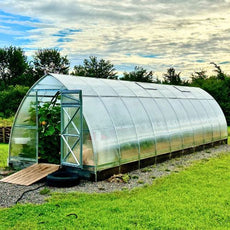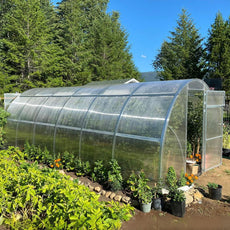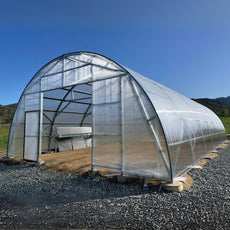From the frosty reaches of the Tatra Mountains to the milder Baltic shores, Poland's landscape is a horticultural adventure waiting to unfold.
This Eastern European country spans 5 hardiness zones, ranging from a chilly 5b in the northeastern regions to a more forgiving 7b along the Baltic coast.
For Polish farmers and gardeners, this diversity is both a blessing and a challenge, demanding ingenuity and adaptability in equal measure.
In this article, you will learn:
- Characteristics of Poland’s Planting Regions
- Challenges of Growing in Poland
- The Benefits of Using a Greenhouse in Poland
- Why Planta Greenhouses?
Poland's climate is a blend of continental and maritime influences. Winters can be severe, with temperatures plummeting to -20°C in eastern regions.
Summers, however, bring warmth to most of the country, with average temperatures hovering between 18°C and 22°C, ideal for a wide range of crops. This climatic diversity requires careful planning and flexibility to maximize each growing season's potential.

Image from Plant Maps
Characteristics of Poland’s Planting Region
Poland's agricultural landscape is shaped by its varied climate patterns:
- A transitional climate, blending continental and maritime influences
- Winter temperatures typically range from -5°C to 0°C, with colder extremes in the east
- Summer averages between 18°C to 22°C, warmer in the central lowlands
- Occasional heat waves can push temperatures above 30°C, particularly in urban areas
- Precipitation is generally moderate but varies, with more rainfall in the south and mountains
These patterns create unique challenges, such as the risk of late frosts in spring and early frosts in autumn, which can significantly impact crop planning and yields.
The growing season in Poland typically extends from early April to late October. Still, it can be shorter in mountainous areas where frost risks persist longer into spring and return earlier in autumn.

Challenges of Growing in Poland
Unpredictable Frost Patterns
Poland's transitional climate can lead to unexpected frost events, particularly damaging in late spring or early autumn. These events pose significant risks to sensitive crops and young plantings.
Soil Quality Variations
The country's diverse geological history has resulted in a wide range of soil types, from rich alluvial soils in river valleys to poorer sandy soils in some regions, requiring tailored approaches to cultivation and fertilization.
Climate Change Impact
Increasingly erratic weather patterns, including more frequent droughts in summer and milder, wetter winters, are forcing Polish farmers to adapt their traditional growing practices and crop selections.

The Benefits of Using a Greenhouse in Poland
Polish farmers supply fresh produce year-round despite the country's challenging climate, and greenhouses are key.
Many gardeners have turned to greenhouse cultivation, which can mitigate the risks of unexpected frosts and significantly extend their growing season. Let's explore the benefits of greenhouse farming in Poland.
1. Extend your growing season
- Without a greenhouse:
In Poland, outdoor cultivation is typically limited to a 6-7 month window, generally from early April to late October. This restricts the variety of crops that can be grown and leaves farmers vulnerable to early or late frost events.
- With a greenhouse:
In many regions, greenhouse cultivation in Poland can extend the growing season to 9-10 months. This controlled environment enables year-round production of crops like tomatoes and peppers, with planting possible as early as March and harvests continuing into November.
2. Grow a Wider Variety of Vegetables
- Without a greenhouse:
Polish outdoor gardeners often focus on hardy vegetables that can withstand cooler conditions, such as:
|
|
- With a Greenhouse:
Greenhouse cultivation in Poland opens up possibilities for a diverse array of crops, including:
|
|
|

Why Planta Greenhouses?
- Wind resistant up to 100 km/h (learn more about how our greenhouses hold up in high-altitude climates).
- Withstands a snow load of up to 480kg per square meter.
- Made with a heavy-duty galvanized steel frame.
- Polycarbonate panels provide 100% protection against UV rays.
- The Sungrow greenhouse is bell-shaped - allowing the wind, snow, and hail to slide off the sides.
- Extendable (Sungrow, Sigma, and Farmer models can be extended beyond 30 metres)
- Made in Europe and exclusively imported
- Maintenance-free



